teacher
now browsing by tag
I’ve been teaching for a while now . . .what’s next?
I’ve been teaching for a while now . . .what’s next?
Discovering what opportunities exist for Art Educators when considering Master’s Programs.
So you have been teaching for a while now and you are considering what is next? For many of us, teaching is a way of life, and seeking ways to better our practice is simply intuitive. But deciding the best way to acquire that learning and what those extra steps will do in the long run can be difficult to answer. My name is Ben Hoffman and I am the Visual Arts Teacher at Kutztown Area High School. Since graduating from Kutztown University in 2015, my journey has taken me to Philadelphia, Baltimore, and back. I have been incredibly fortunate to teach and work in museum settings, galleries, community arts centers, summer arts programs, and public-school settings. In addition to my range of experiences in teaching, I currently serve as the PAEA Region10 Representative as well as chairman of the Kutztown University Arts Society.
As an Art Educator, you are equipped with far many more talents and experiences than what our certification deems. Teaching K-12 is merely one of the many rewarding opportunities that we have available. This past year, I successfully completed my fourth year at Kutztown Area High School as well as graduated with my Master’s in Art Education from Kutztown University. For many of us, working towards our Master’s in Education is often most appropriate and considered an acceptable pathway when pursuing our Level II Certification. Unlike my undergrad experience, the courses in my Master’s program were directly driven to my pedagogy and helped enrich the quality of my program. Much of any undergraduate program is directed towards the understanding of pedagogy and curriculum while my time as a graduate student applied that theory to practice. From rewriting curriculum, developing new courses, embodying a new mindset for teaching, and advocating for our growing program, my experience as a graduate student was unbelievable.
Regardless of the path that you may take, it goes without saying that it will take time and energy. I was highly motivated to learn just as much as I wanted to move up on the pay scale. But just recently, I stood at the crossroads of no school and yearning that desire to continue to grow. This is when I then contemplated other master’s programs and even my doctorate. Now that I have my Master’s In Art Education, what more can I do?
Connecting with people and establishing those relationships is the foundational piece to making any impact. Now having my Masters in Art Education, I am considered qualified to teach in non-traditional settings, serve as a nonprofit program director or even an instructional designer. Each of these professions seemed equally interesting, but I still wanted to know what more was available. This is when I stumbled upon a Master of Arts in Arts Administration. Unlike the education world, Arts Administration extends opportunities to individuals who are equally as dedicated, talented, and passionate as the artists and audiences they support.
The nonprofit arts sector generates nearly $170 billion in economic activity each year according to the America for the Arts economic impact study. Because of this economic and political impact, the public sector, arts, and cultural organizations are increasingly seeking trained professionals to provide vision and leadership. (Kutztown University, 2019) While teaching is one of the most rewarding fields there is the experiences that could be acquired from such a unique program that sparked my interest and felt applicable to the events our district puts on. I saw this opportunity as the key to my success in being able to learn and value the connection I share as an artist, educator, and advocate. Whether coordinating large-scale festivals, serving as a museum or gallery director or simply coordinating community events, this was the next step in my journey as an art educator.
Often a master’s program can feel daunting and overwhelming, but from my own experiences, that deep investigation of the arts and its cultural impact throughout time and across cultures have significantly impacted the person that I am today. Since graduating with my Master’s in Art Education, the excitement to grow as an educator has equally fueled my artistic practice and understanding of leadership. Furthermore, having that deepened understanding of our roots in history has helped shaped my appreciation for our field and the impact we continue to make. I would be remised to look back and appreciate all that every art educator has done to pave the groundwork for my future.
While I begin my second Master’s, I continue to question all things and continue to seek the most meaningful connections for my own classroom. While writing papers and reflecting may seem like much of any graduate program, the conversations between like-minded peers in the field are incredibly valuable. Furthermore, serving as Chairman of the Kutztown University Arts Society has challenged my own best practices and demanded that I view the Arts from a unique perspective. While teaching comes with its own set of principles and expectations, leading a group of professionals who each come with a diverse set of experiences and skills has its challenges. It is those difference and range of perspectives that cultivate a healthy and successful arts organization. It is incredibly interesting to see how my perspectives as a teacher are often valued in these new settings when working alongside those in higher education.
It is never an easy decision to make when picking a program. Every district will have different procedures and should be considered when selecting a program. I am incredibly fortunate that my district values teachers to continue their education. While loans and time may be a burden, know that there are countless opportunities and ways in which you can tailor the best program for you. I was determined to finish in three years. For others in the program, there was a range of flexibility. Some students were those who decided later in life to pursue their master’s while some students had transitioned directly from their undergraduate program full-time.
Regardless of the path that you may decide or the timeline you establish for yourself, know that you will never regret the experience. Any graduate program you choose will demand that you set aside time to work and reflect, but just as you now actively participate in PAEA, you will have no problem in accomplishing this goal. For many, just like myself, you may never know where the Arts will take you, but as long as the Arts are alive and healthy, there will be nothing but success in your future. Every story will be different. I am incredibly grateful for my experience as a graduate student and look forward to my time as an Arts Administration student.
I hope that my story inspires you to take that next step in whatever your journey has in store for you. No matter the path, the Arts will always be there as will PAEA to support you in all professional development endeavors. If you should have any questions, comments, or concerns, please do not hesitate to contact me directly. I am more than happy to extend my knowledge and support each of you in the best ways that I can. Thank you again.
Respectfully,
Benjamin E. Hoffman
Kutztown Area High School
Visual Arts Teacher
bhoffman@kasd.org
Balancing the Teacher and Artist in Me, By Jackie Thomas
Balancing the Teacher and Artist in Me
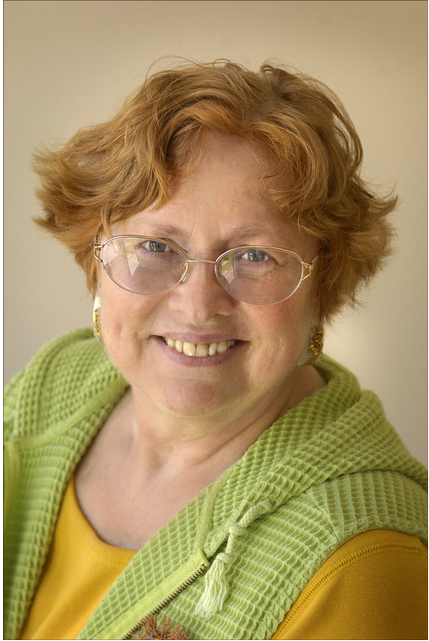
As a Fibers Artist, time has always been a challenge for me. Just plain living takes so much time, and when a teaching career is added, there is little left for the creative process and studio work. I thought I was not really productive in the studio while I was going through challenges of balancing home and school. But in retrospect, I realize I really was productive by channeling my creative energies in a number of ways:
As a brand new teacher, fresh out of college, and having already decided to specialize in Fibers. I packed up a project bag with a pre-woven rya rug backing (on which I drew a simple design), some yarns, a measuring tool, and a large tapestry needle. I kept the bag at school, available for the snippets of time available to work on the rya rug during faculty meetings and in the faculty room (I was told that teachers thought I was stuck up if I never left my classroom, so I scheduled a couple of periods a week to talk with teachers in the faculty room and did my planning at 5:30 in the morning and at home). It was a bulky bag that I lugged around, but I learned about trying to fit into the building and being a member of the larger school community. I believe it took all year to finish that Rya Rug.
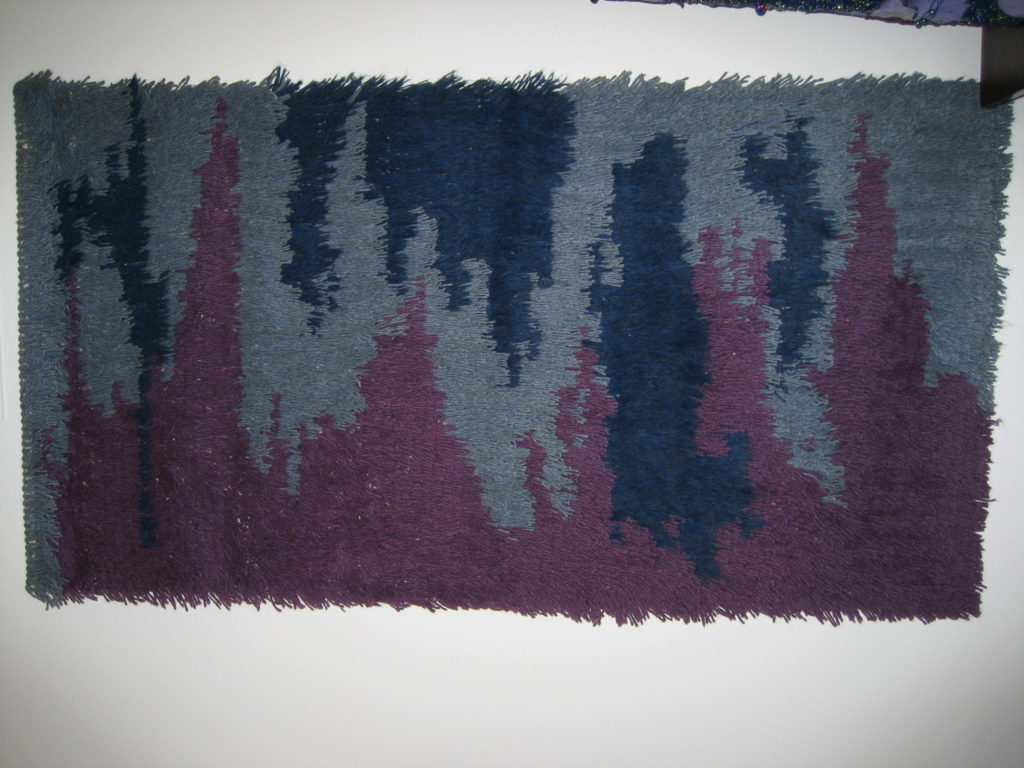
Time to balance teaching and art making didn’t shift any over the years, and I decided that I wanted to complete more than just one artifact in a school year. I looked for projects that would not require much of an investment in time. I tried jewelry making for a couple of years. A new bag of materials accompanied me to meetings and on car trips when someone else was driving.
Feltmaking jewelry:
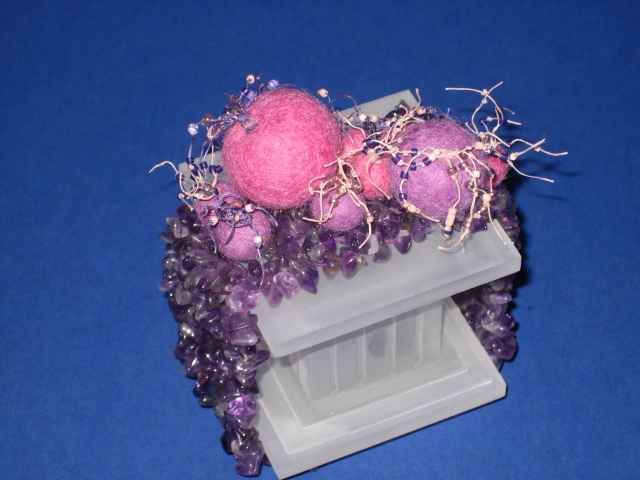
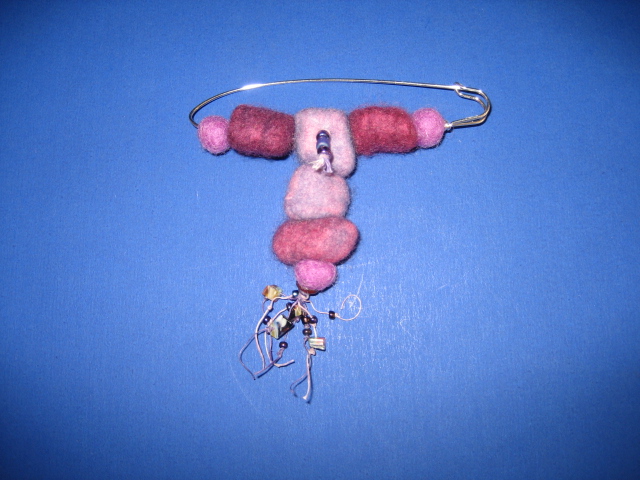
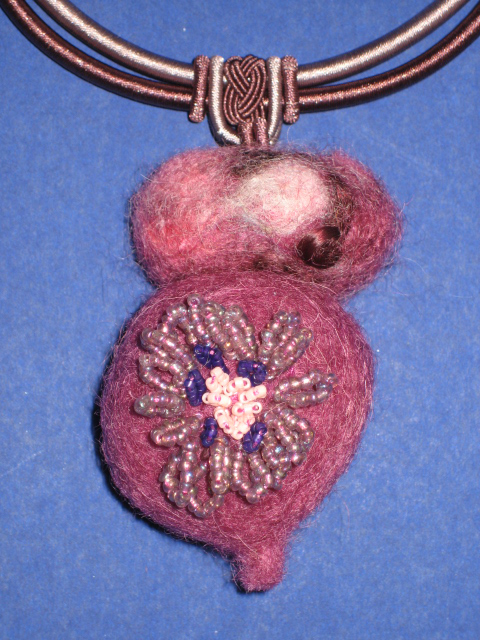
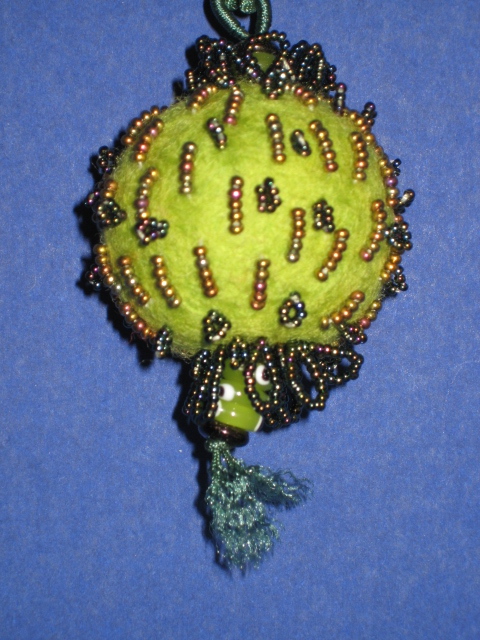
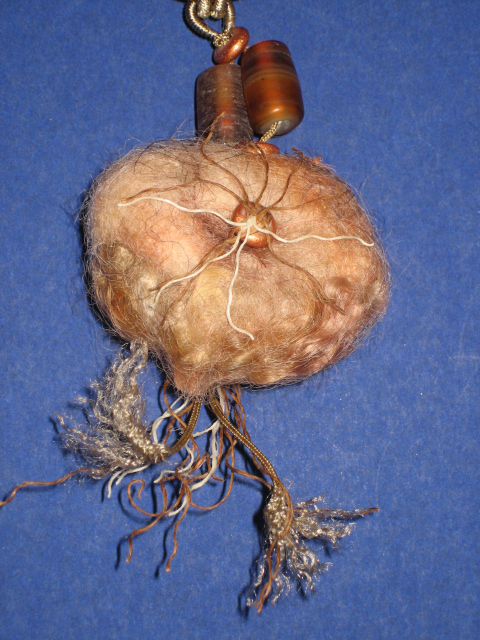
Waxed linen coiling/twining jewelry:
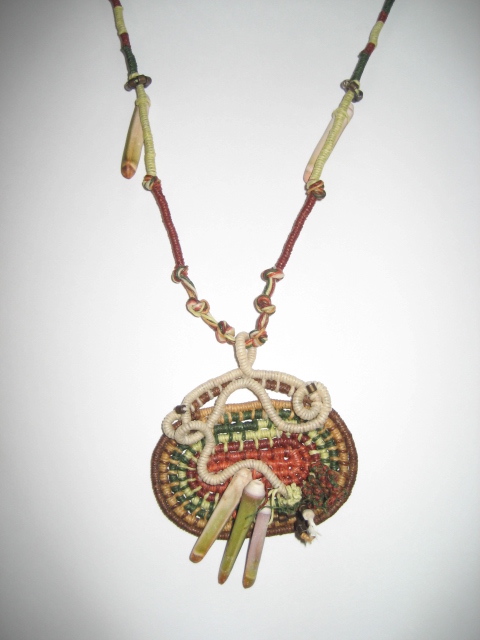
But I eventually decided I didn’t really find jewelry satisfying – too much assembly. And, fibers jewelry making was not really transferable and informative to teaching my students.
Quite by accident I began to make miniature dolls as fetishes and found that quite satisfying for more than ten years. My sister and I attended the American Crafts Council Baltimore Winter Market every year, and I bought one tiny wearable fetish animal doll from An African doll maker each year.
African Animal Fetishes:
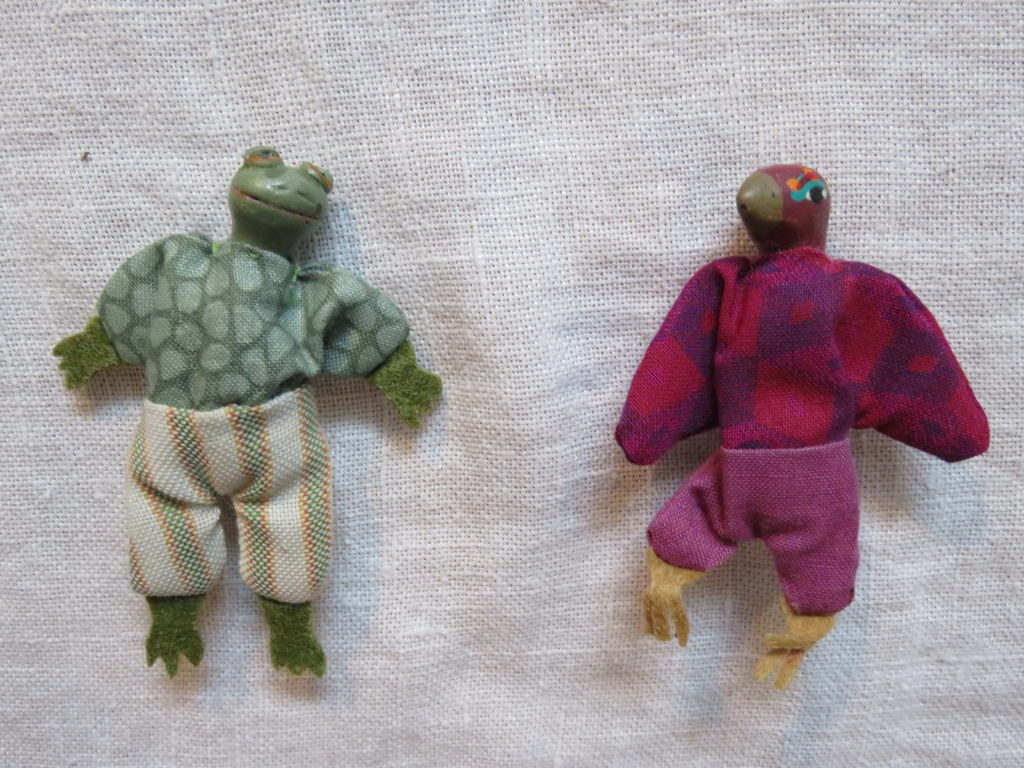
“A fetish is an object of magical powers. It is a guardian chosen by you. Once you have chosen your fetish you must promise to faithfully care for it. You must keep it in a warm, dry place and feed it one grain of corn or rice or bean each year. In return, it will insure you good health, clear sight, protection against injury, success in hunting and trading, and abundant love.”
After the fetish artist moved back to Africa, I went through fetish withdrawal, and I began to design and make my own little fetish dolls. I have worn a fetish every day over the past 40+ years.
I usually worked on a series of fetishes of one color/fabric but each with it’s own look/design (one to keep and the others to share). I tried to complete one step in each sitting (i.e. trace the pattern onto the cloth and cut them out; sew the fetish shape with right sides of the cloth together & leaving an opening along one leg; turn the cloth fetishes right side out, stuff them and stitching them closed; embroider the faces; add hair; clothe one fetish at a time).
Some of my Fetishes:
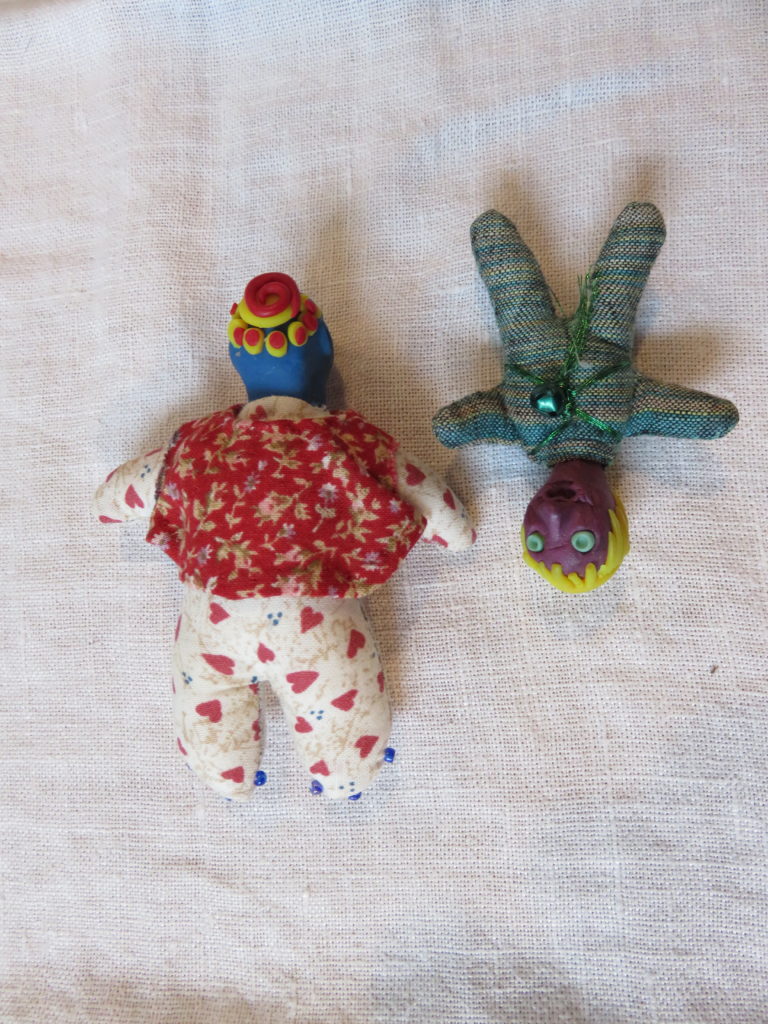
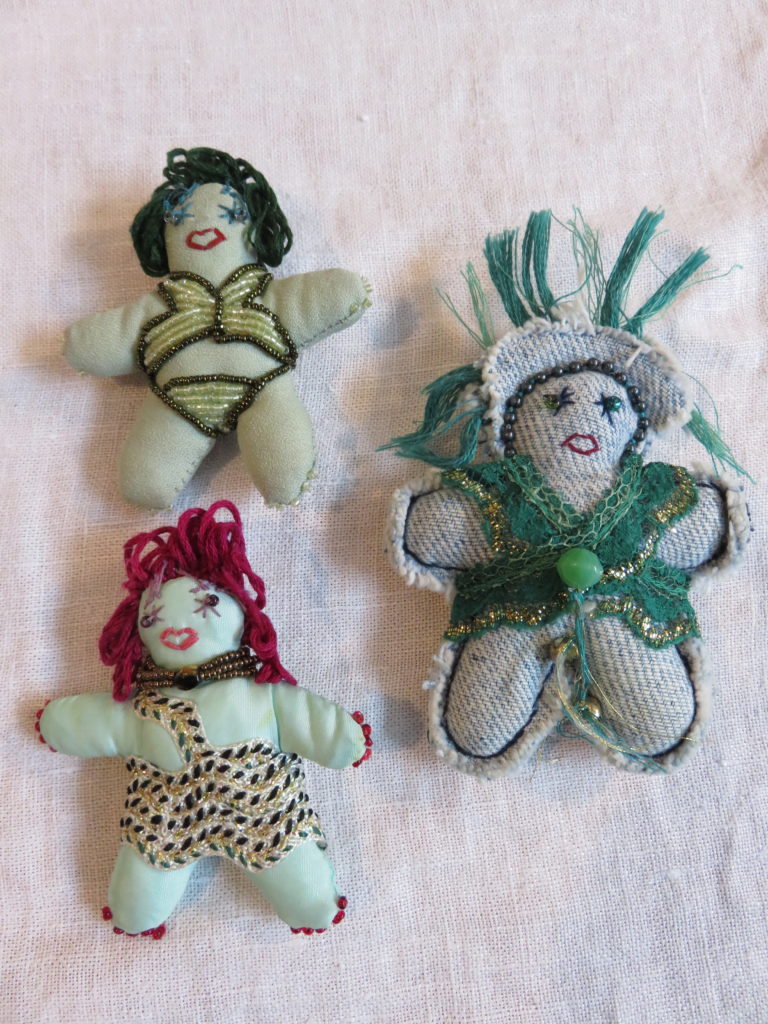
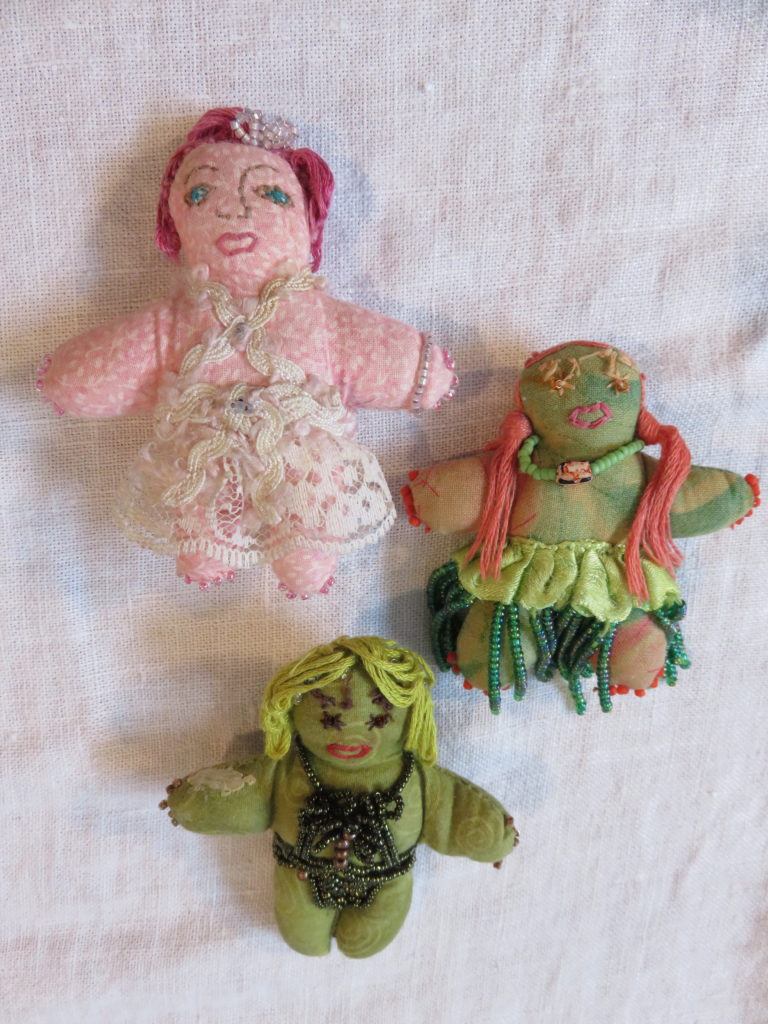
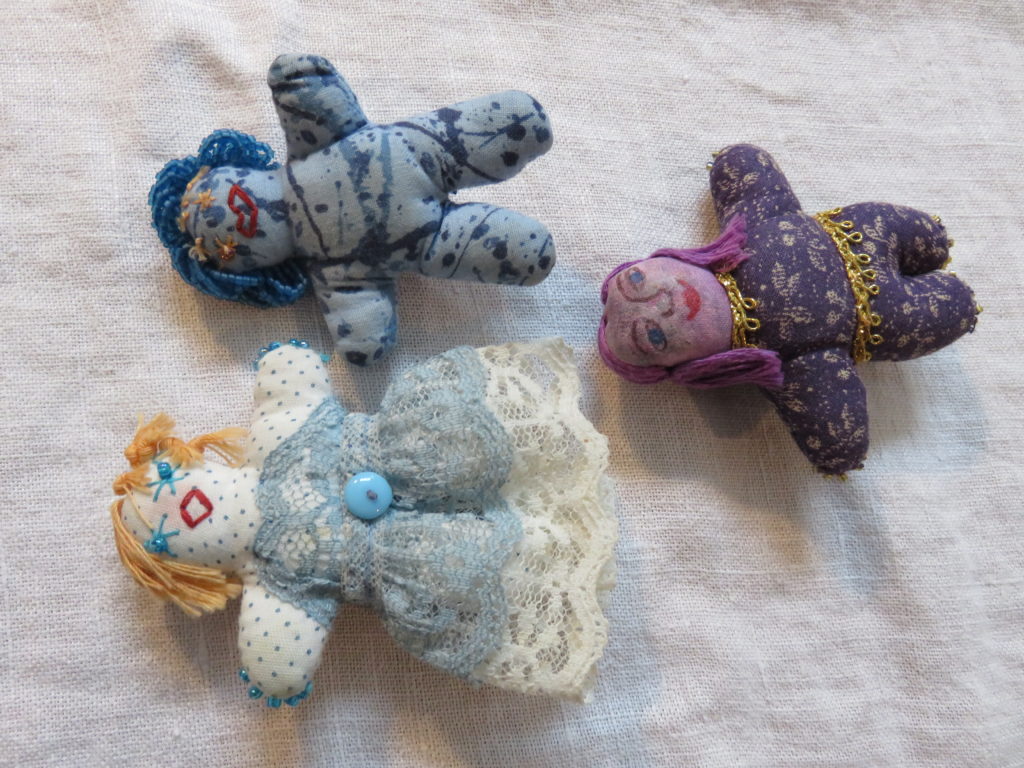
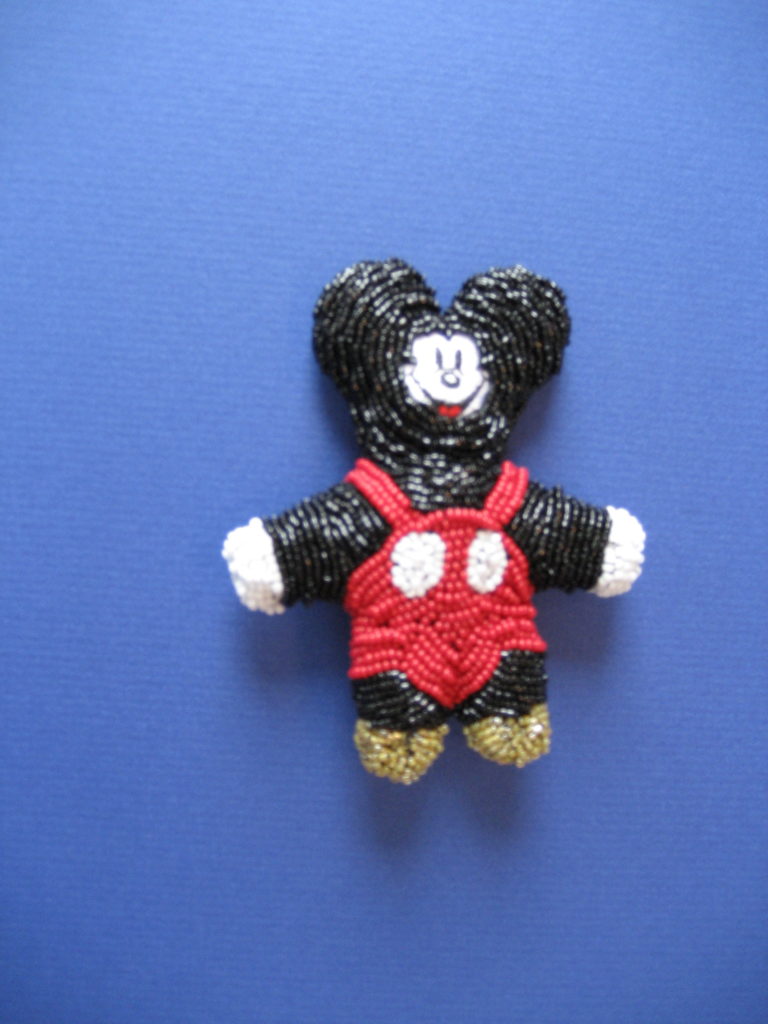
An AHA! Moment occurred when I realized I had boxes and bags of process and project samples for feltmaking (and other fibers processes). They were already of my own hand and design. I pulled them out and began to assemble them into larger sculptures (a technique I then used with students as well). I also challenged myself to create one-a day miniature artifacts to be assembled later into larger pieces.
“Pulls”
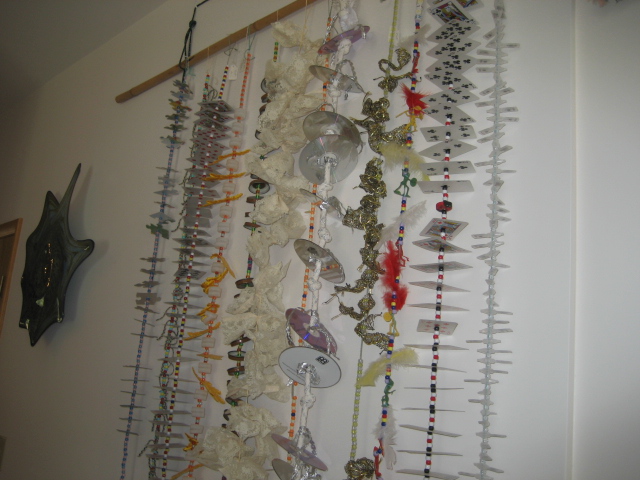
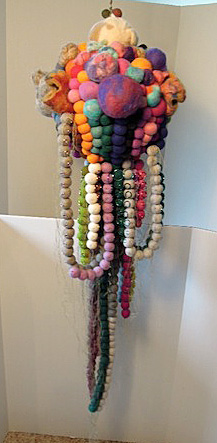
“It’s An Octopus!”
The challenge is the time. I dedicate time (usually weekend or evening) to get a project concept defined in my sketchbook and to organize materials. I look at my schedule to see where I might capture unscheduled time. And I always have a bag or a box loaded and ready when time suddenly and unexpectedly becomes available. I have rules:
- Never let my own art work interfere with planning for my classes and experimenting with materials and techniques before teaching them. Planning is important.
- Never work on my own art during teaching time.
- Request someone else drive whenever possible so I can work on a project during the trip.
- Always have a journal or paper to write down ideas, things to remember, and to record discoveries and things I learned.
- Collect materials and experiences on every walk, vacation, and opportunity.
- Never throw away project failures or demonstration projects. They may serve another purpose later. At the very least, failures help me remember how NOT to do it (because otherwise I will usually do it the unsuccessful way over and over again).
- Teaching others is a prime way to learn and improve my own skills.
- There is always something to be learned, even in the most repetitive experience.
- ALWAYS be ready to work on a project…. i.e. ball gown components created while sitting at Little League games.
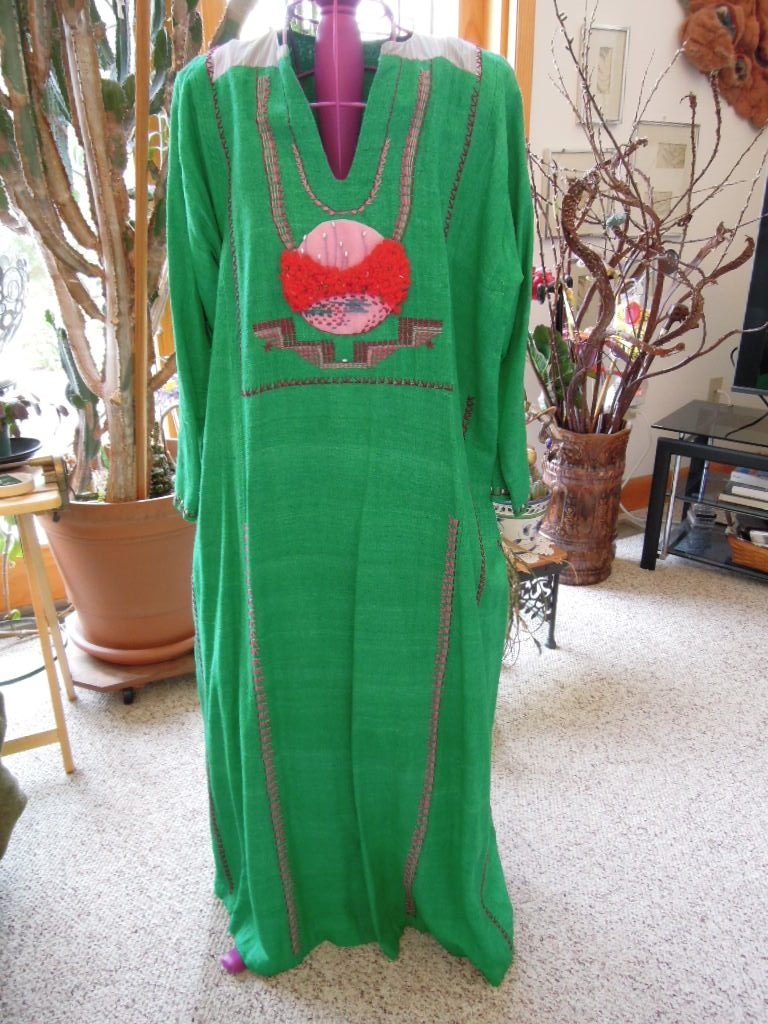
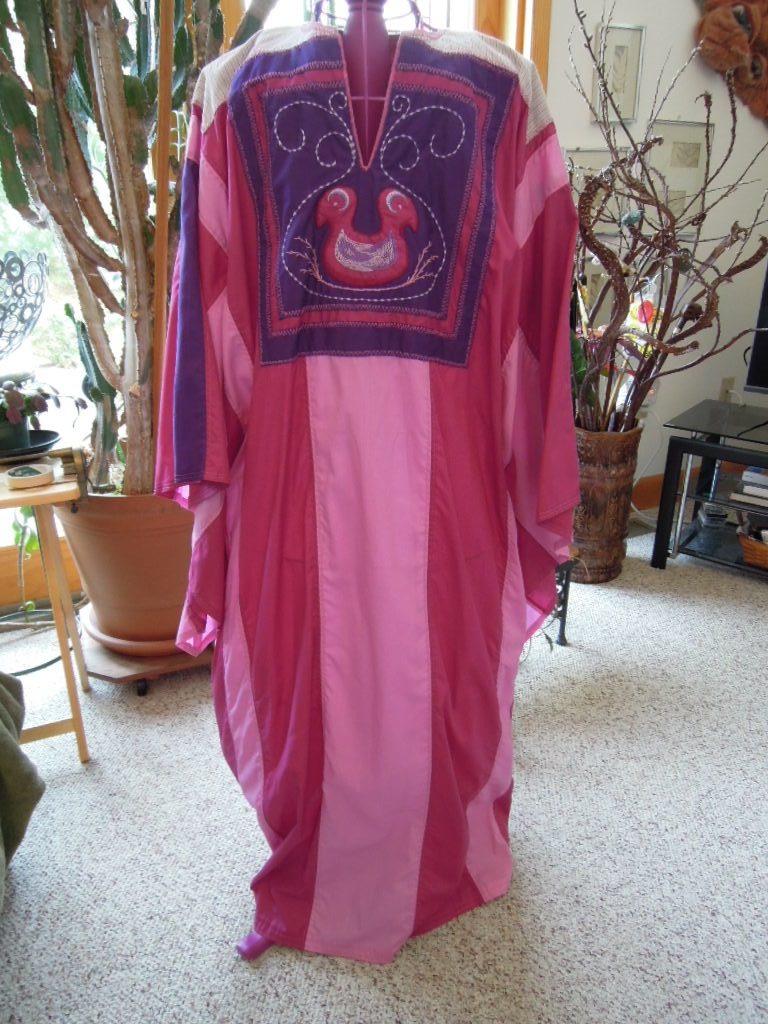
If nothing else inspires, I can always redesign/embellish wearables from my closet.!

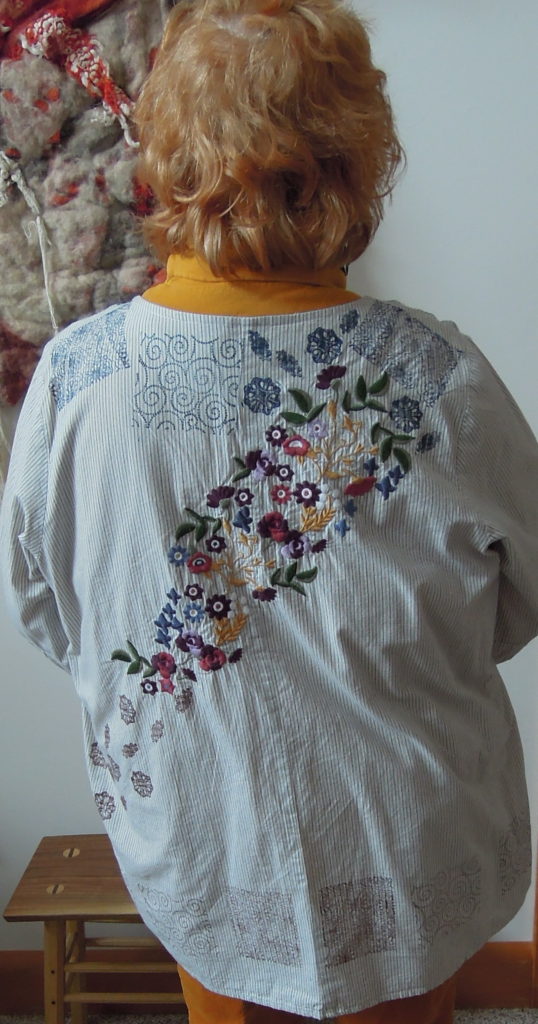
C’est Finis!

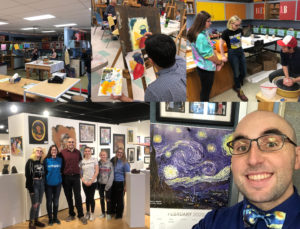
 D5 Creation
D5 Creation